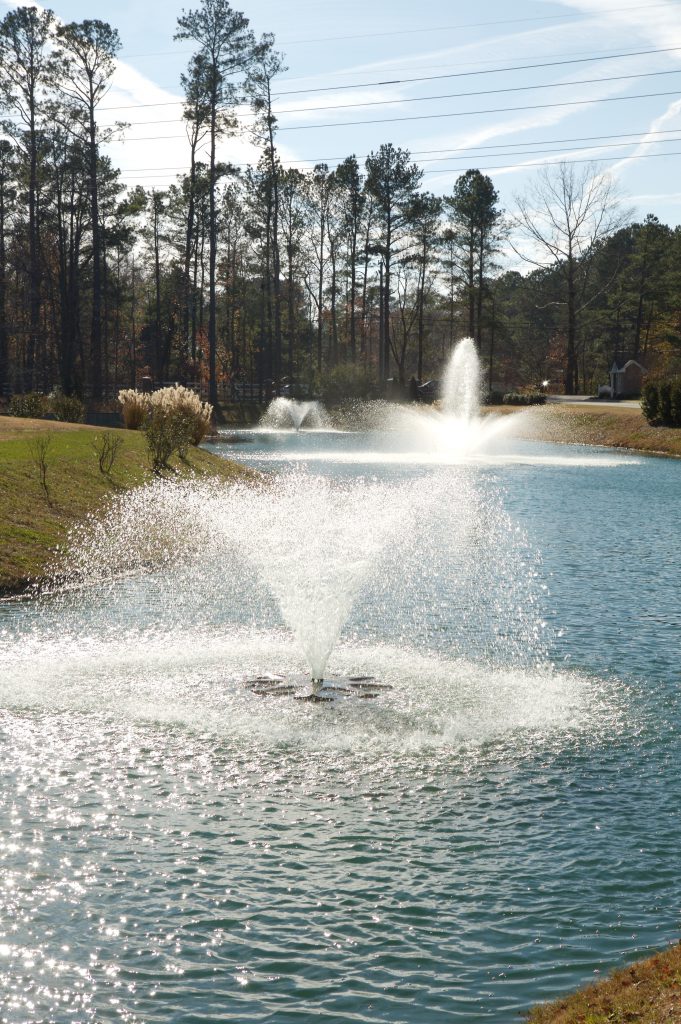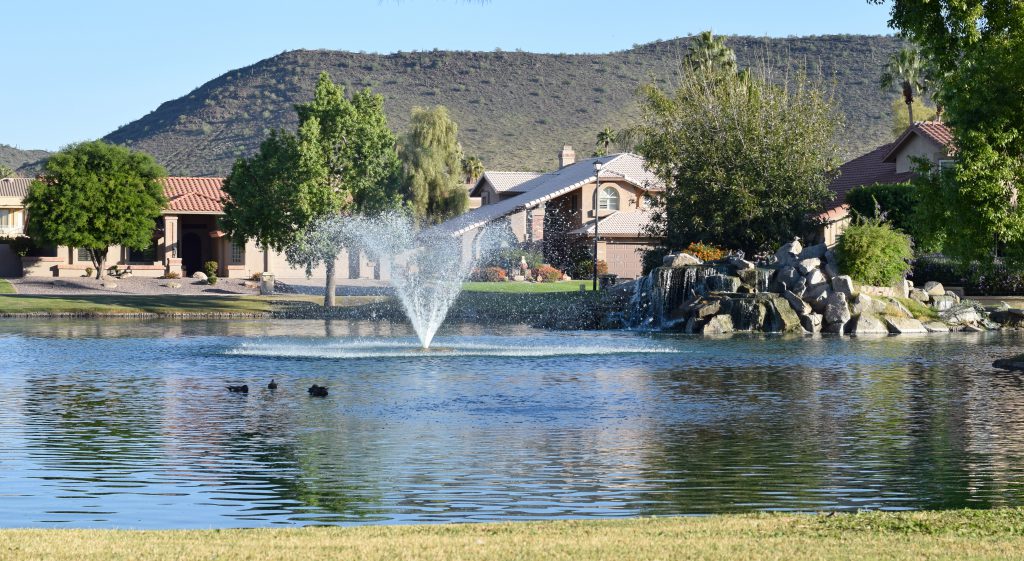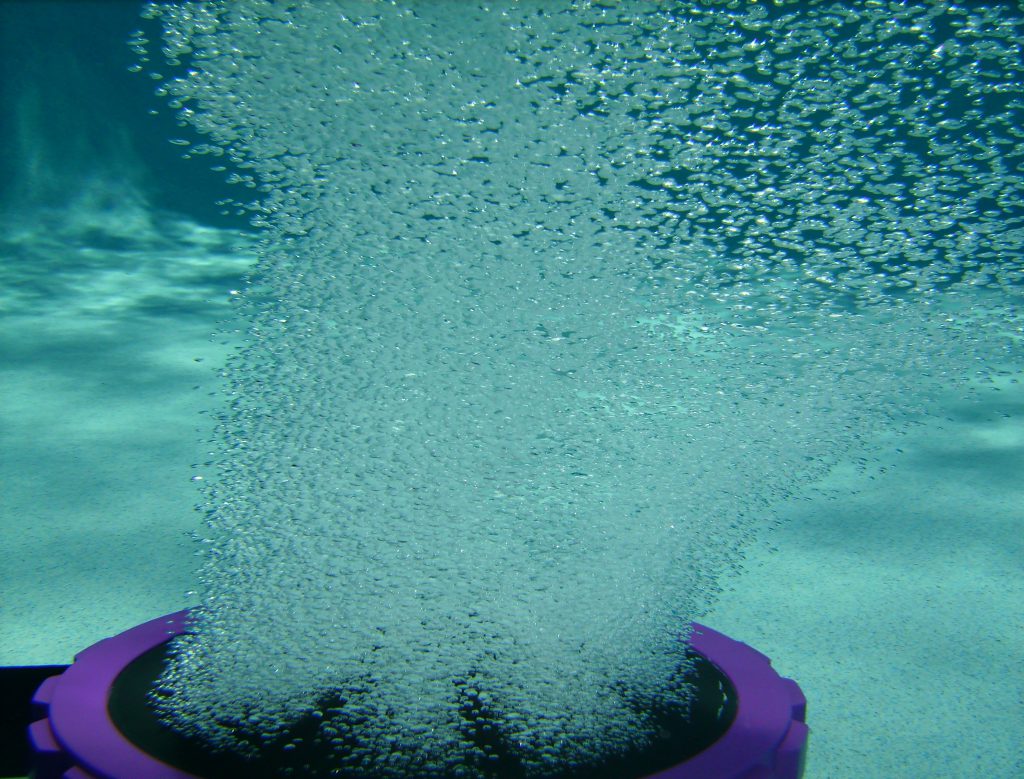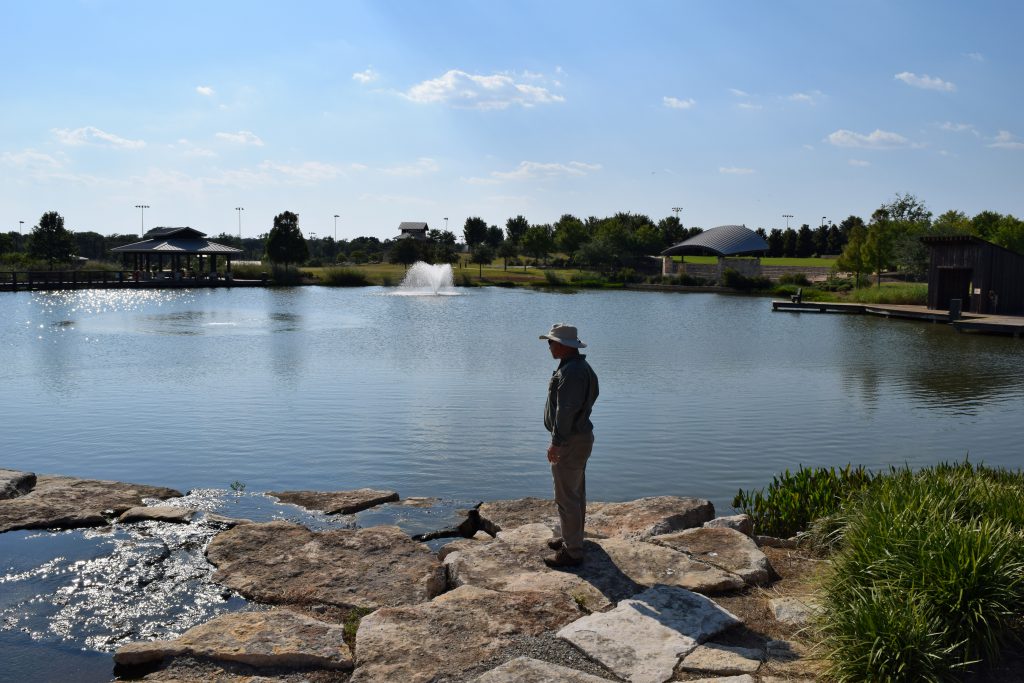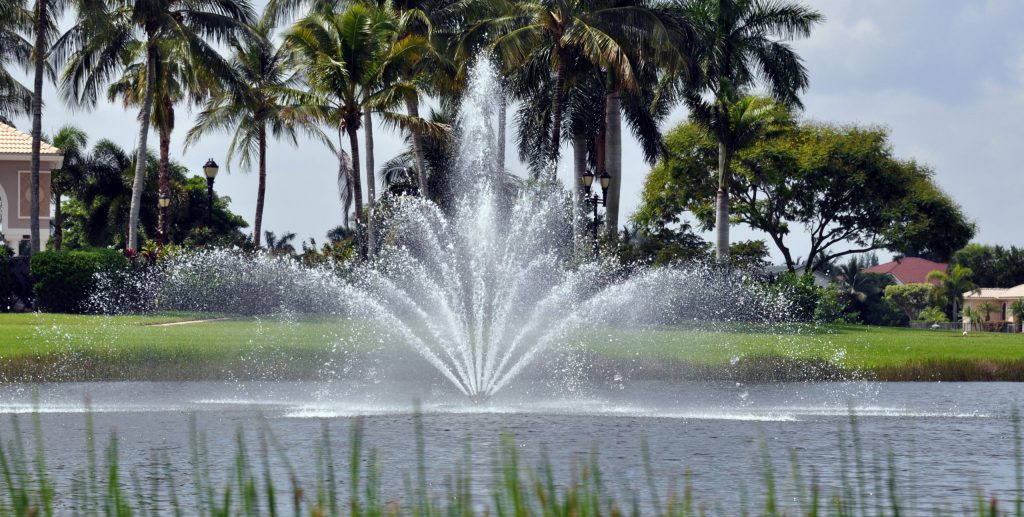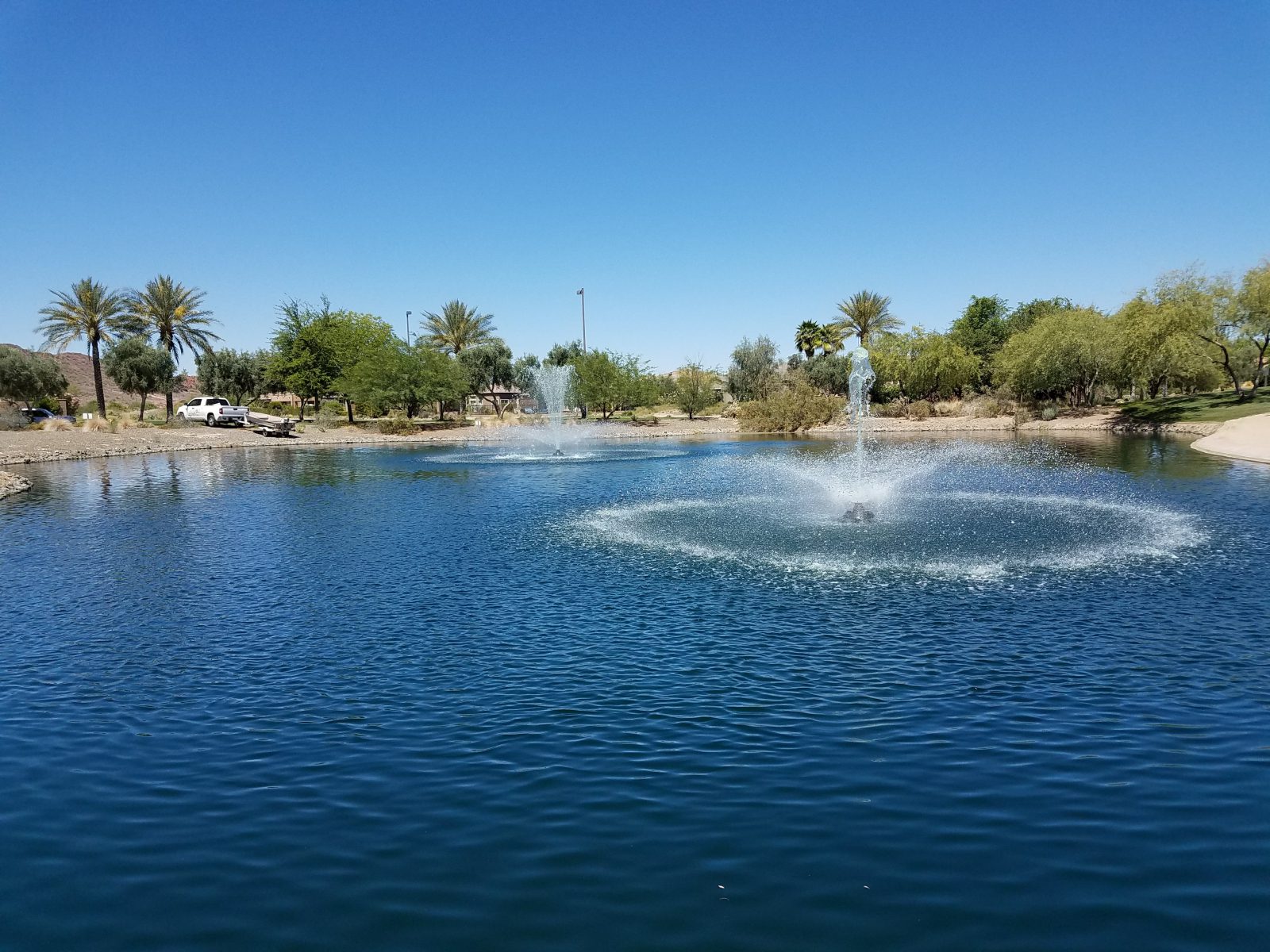
How Does Aeration Benefit a Pond?
Many people’s best memories involve time spent around the water – fishing with grandparents, boating and kayaking in the summer, camping or hiking along scenic shoreline trails, and so much more. Whether natural or human-made in origin, lakes and ponds are complex ecosystems that need tender loving care to stay healthy and enjoyable. Man-made ponds are often created to collect stormwater, provide farming and irrigation resources, and help bring our valued bond with nature to the heart of our communities. One of the most aesthetically pleasing ways to keep these community waterbodies in peak condition is aeration.
What Does an Aerator Do in a Pond?
Aeration is a tool used to maintain dissolved oxygen levels in the water. In stagnant waterbodies, it’s common to observe scum and algae on the surface of the water or experience “rotten egg” odors, which develop in ecosystems with imbalanced oxygen and nutrient levels. Ponds near urban developments, turfgrass, agriculture, or other types of fertilized land are most susceptible to nutrient pollution – a process where excess phosphorus and nitrogen run off the land into the water.
Without proper management, this process can become an unhealthy cycle. As scum and algae develop on the water’s surface, they block sunlight from reaching native plants. Eventually, the beneficial plants will die off, contributing more algae-fueling nutrients to the already imbalanced ecosystem.
Aquatic algaecides are a quick way to eradicate algae, but they are not a long-term solution. Algae is stubborn and will return after a temporary algaecide treatment. Pond aeration is a more sustainable tool to support the health and beauty of your waterbody. Dissolved oxygen helps prevent phosphorus and nitrogen from creating poor water quality conditions by converting the excess nutrients to forms that cannot sustain algae. Aeration also circulates the water in different layers and depths. This prevents surface algae accumulation and, as a result, allows desirable aquatic plants to thrive.
Types of Aerators: Floating Fountains
One of the most common and visible aeration solutions is a floating fountain. Fountains don’t just create aesthetically pleasing patterns and add dimension to a waterbody, they also have many valuable water quality benefits. As water continuously falls onto the surface of a pond, it creates turbulence that allows submersed gases such as methane, carbon dioxide, and hydrogen sulfide to escape, and facilitates the transfer of oxygen into the water column. Because this turbulence only impacts the topmost layer of the waterbody, fountains are best suited for shallow ponds.
Types of Aerators: Bottom Aeration Systems
Bottom aeration systems or submersed aeration, on the other hand, work by compressing oxygen and pumping it into the water from the pond’s bottom via subsurface tubes to submerged bubble diffusers. As bubbles rise up to the surface, they diffuse oxygen into the water. This vertical mixing helps spread the oxygen throughout the entire pond, no matter how deep it is.
Other Benefits of Aeration
Aeration not only helps improve water quality conditions, but it may also reduce the mosquito population around your pond, a side effect that is welcomed by all. It does this by disturbing the pond’s surface so that mosquitoes can’t lay their eggs and supporting the health of frogs, fish, and other wildlife that eat the mosquitoes themselves.
In fact, aquatic species like fish love aeration and need it to survive. They absorb necessary dissolved oxygen from the water around them, and their oxygen needs change based on the time of year. In the summer, a fish’s metabolism speeds up and increases its oxygen requirements, sometimes beyond the capacity available in the pond. During the winter, a fish’s metabolism and need for oxygen decreases; however, reduced sunlight, decaying plant material, and surface freezing can lead to an accumulation of carbon dioxide. During these times of year, the risk of fish kills is especially high. Aeration is a valuable tool to prevent gas build-up and keep dissolved oxygen levels balanced throughout the waterbody.
Enhancing the Beauty of Your Waterbodies
Finally, pond aeration can be beautiful. The calming sound of the water’s motion creates an outdoor environment that all can enjoy. No matter if the pond is in front of a business, on a golf course, or surrounded by a homeowners community, everyone desires a peaceful spot where they can relax and enjoy themselves. The right aeration system can transform a lake or pond, making it a pleasant feature to highlight a home or property.
SOLitude’s Toolbox of Solutions
Aeration is an important tool in the management of lakes and ponds, but it is just one of many. Like any living being, an aquatic ecosystem is complex and is constantly changing in response to the surrounding environment. To help maintain a balanced state that is less susceptible to unsightly problems, aquatic specialists recommend year-round monitoring and maintenance. Ongoing, eco-friendly solutions include shoreline weed control, buffer management, water quality testing, nutrient remediation, and of course, regular aeration system maintenance.
If larger problems manifest, such as an invasive species infestation, shoreline collapse, or flooding due to muck build-up, professionals can utilize more advanced tools and solutions to get your waterbody back on track. Contact your lake and pond management professional to learn more about the aeration options available to you, as well as the benefits of an Annual SOL Pro Management Plan.
The Benefits of Aeration Solutions
SOLitude Lake Management is a nationwide environmental firm committed to providing sustainable solutions that improve water quality, enhance beauty and preserve natural resources.
SOLitude’s team of aquatic scientists specializes in the development and execution of customized lake, stormwater pond, wetland and fisheries management programs. Services include water quality testing and restoration, algae and aquatic weed control, installation and maintenance of fountains and aeration systems, shoreline erosion control, muck and sediment removal and invasive species management. SOLitude partners with homeowners associations, golf courses, private landowners, businesses and municipalities. SOLitude Lake Management is part of Rentokil, a leading business services company, operating across the United States, Canada and Puerto Rico.
For more information, visit SOLitude Lake Management at solitudelakemanagement.com, and connect on Facebook, LinkedIn and Twitter.








